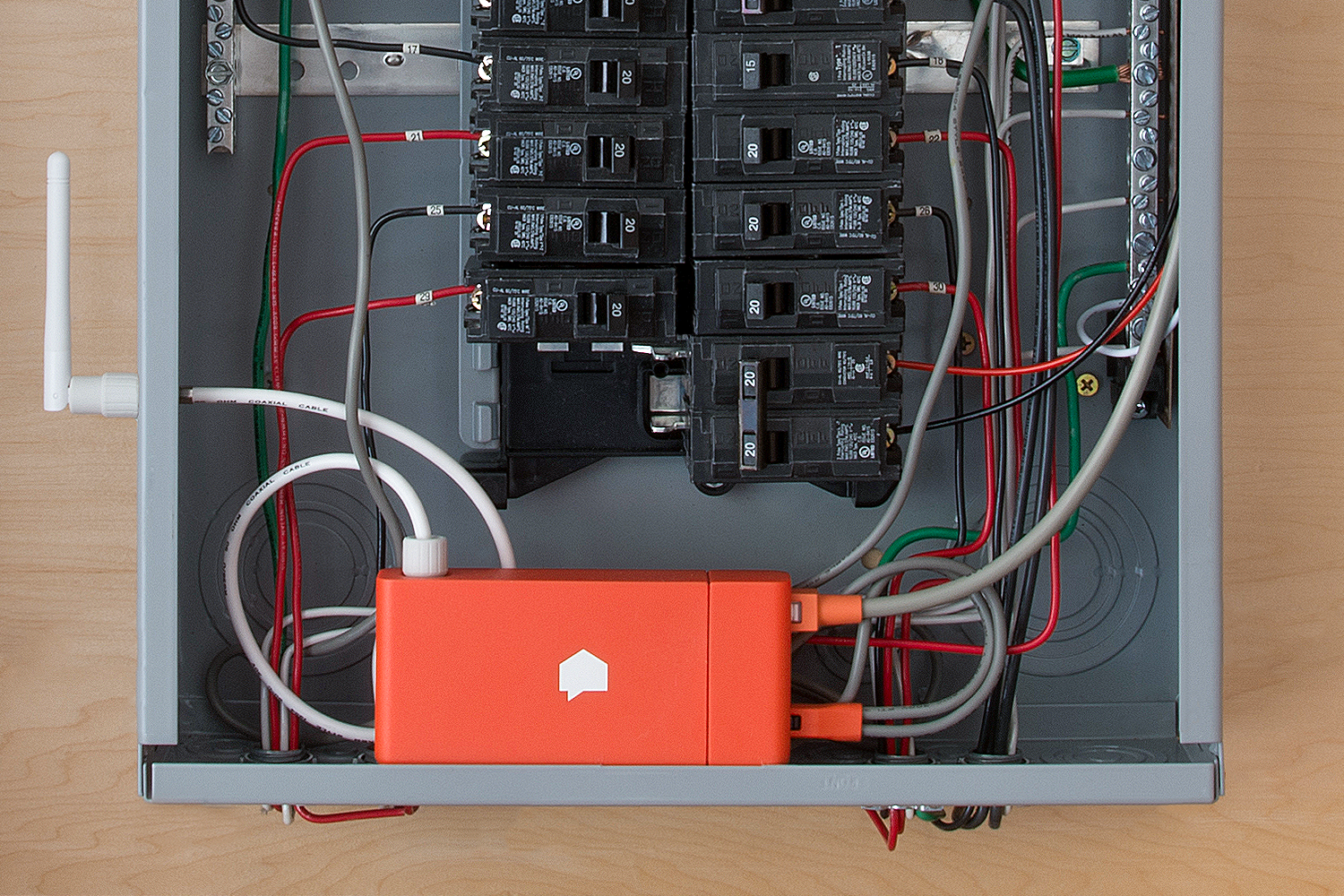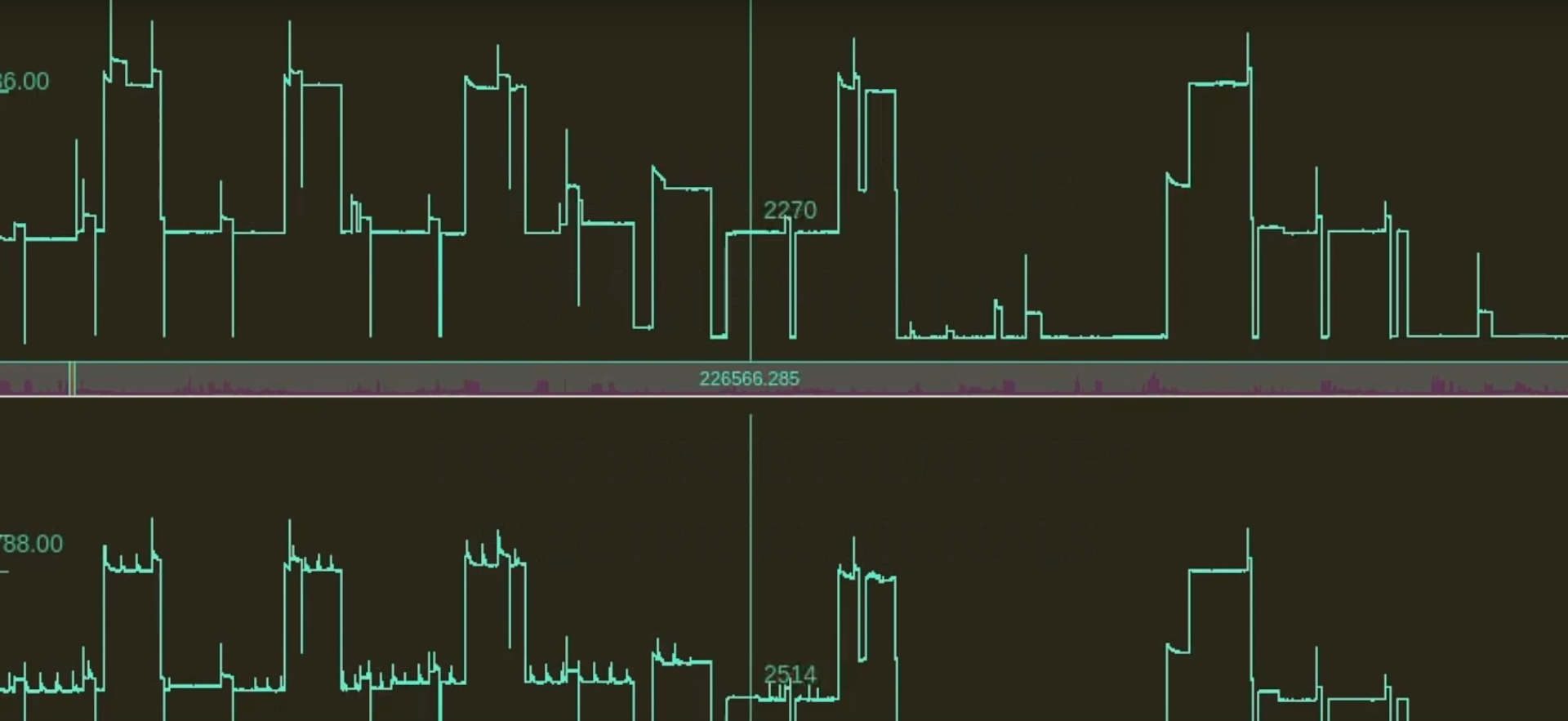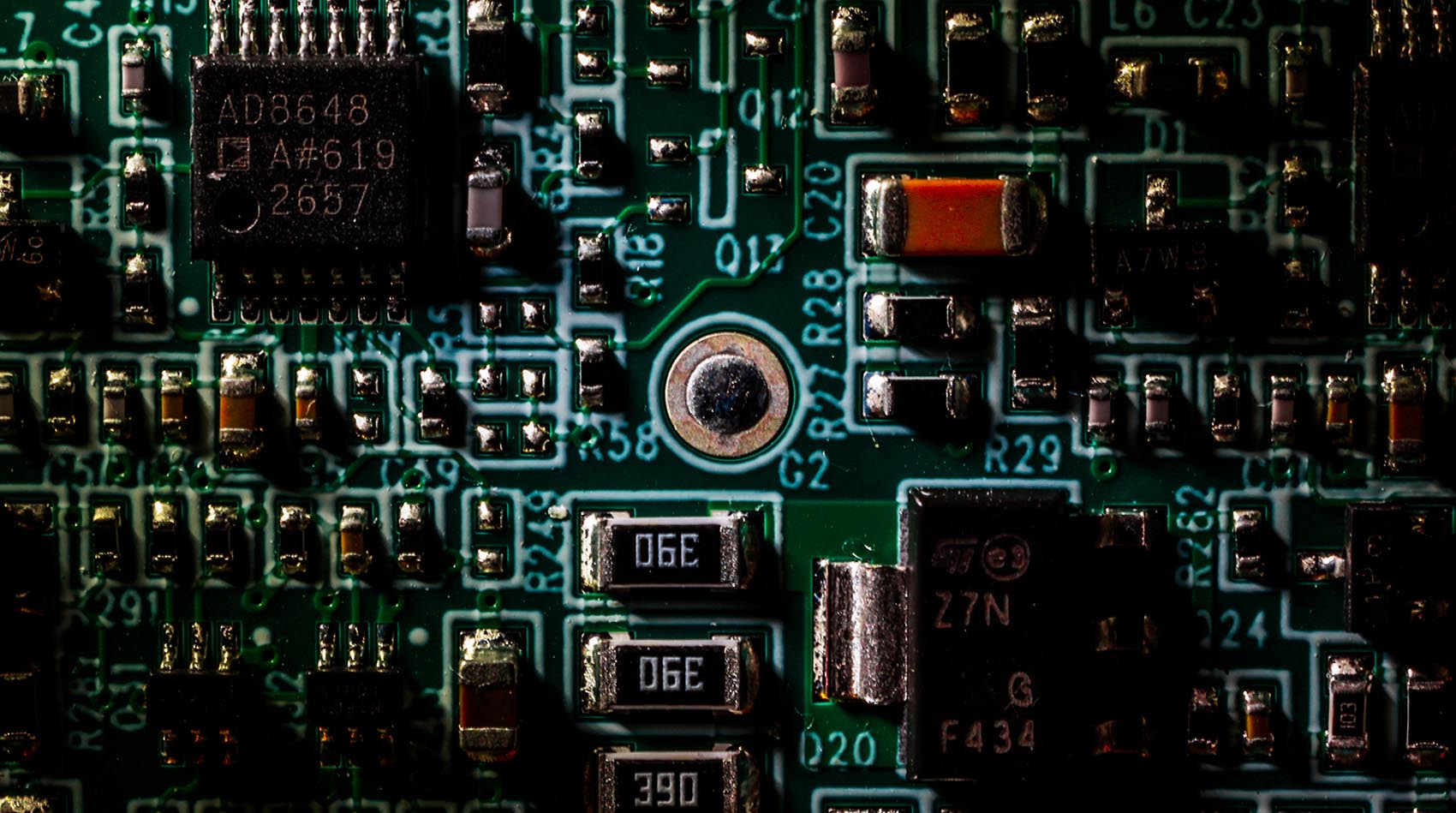With Sense, you can track your energy usage in real-time down to the second, identify energy hogs in your home and even set notifications to track the use of specific devices. How does Sense do all this? It all starts with the small orange box that is the Sense monitor.
The computer inside your Sense monitor is the brains of the operation. It reads signals from your electrical panel, analyzes subtle changes, and sends energy data to your smartphone so that everything you need to know about your home energy use is in your pocket.
From the Grid to Your Monitor
Installation (which should be done by a licensed electrician) is pretty straightforward and typically takes less than 30 minutes. Two current sensors clamp around the main power feed inside your electrical panel, and then Sense connects to a 240V breaker; there’s no rewiring required. The sensors take advantage of the relationship between electricity and magnetism to non-intrusively measure the current, while the voltage is measured through the same circuit breaker that supplies the monitor with power. The monitor itself only uses about 4 watts, but the 240V breaker allows it to measure voltage on both phases or “legs” of your homes power.

Once the monitor is installed, it begins sampling data at 1 MHz, meaning it’s analyzing about 4 million data points each second. This may seem like a lot, and frankly, it is. This type of high resolution measurement is necessary to deliver the in-depth energy monitoring, device detection, and notification functionality that Sense provides. To put this in perspective, the average smart meter provided by your electric company samples data once every 15 minutes. That means Sense is sampling about 84 million times more frequently than a smart meter. This type of high-resolution monitoring makes it possible for Sense to distinguish similar devices, and helps with our research towards fault detection monitoring to help keep your home safe, and let you know when appliances may be malfunctioning or running inefficiently.
As this data is processed onboard the monitor, small bits of information are also sent through your home’s Wi-Fi to our cloud servers. The computer inside your Sense monitor is doing most of the everyday heavy lifting to reduce the amount of data that needs to be transmitted back and forth, and to be sure Sense isn’t using too much of your internet’s bandwidth.
Automatic Device Detection
Once these bits of information are processed in the cloud, the machine learning algorithms our data science team have developed analyze the data and look for individual devices in your home’s electrical signals. This is a complex process that is rooted in some of the same technology used for speech recognition. Sense is trying to separate the “voices” of each individual device in your home from the “noise” of all the other activity in your home, and then recognizing patterns in these “voices” to help determine what they might be.
Once the algorithms identify a signal as an individual device, a model is automatically developed to track that device within the home. That model is sent back to your monitor so that device monitoring can be handled locally while the servers continue their analysis. Working together, the monitor and servers identify devices in the home and deliver real-time energy data to the “client” side of our software, which is the iOS, Android, and web apps that you interact with every day.

This graph represents changes in whole-home power consumption as monitored by Sense, and some of the distinctive patterns that Sense uses to identify individual devices.
From your home to your phone
With such a long journey, you might think that the data would take a little while to reach your phone, but within a split second, your home’s energy use is ready to be viewed in the Sense Home apps for iOS, Android, and the web. It may take a while for your Sense monitor and our cloud services to determine patterns in your devices and start recognizing devices automatically, but in the meantime, you can learn a lot using the Sense Home app just by looking at the Power Meter and switching devices in your home on and off. How much energy do they use? Is a devices energy use constant, or does it change over time?
Learn more about the Power Meter in this video, and get started conserving energy right away!
